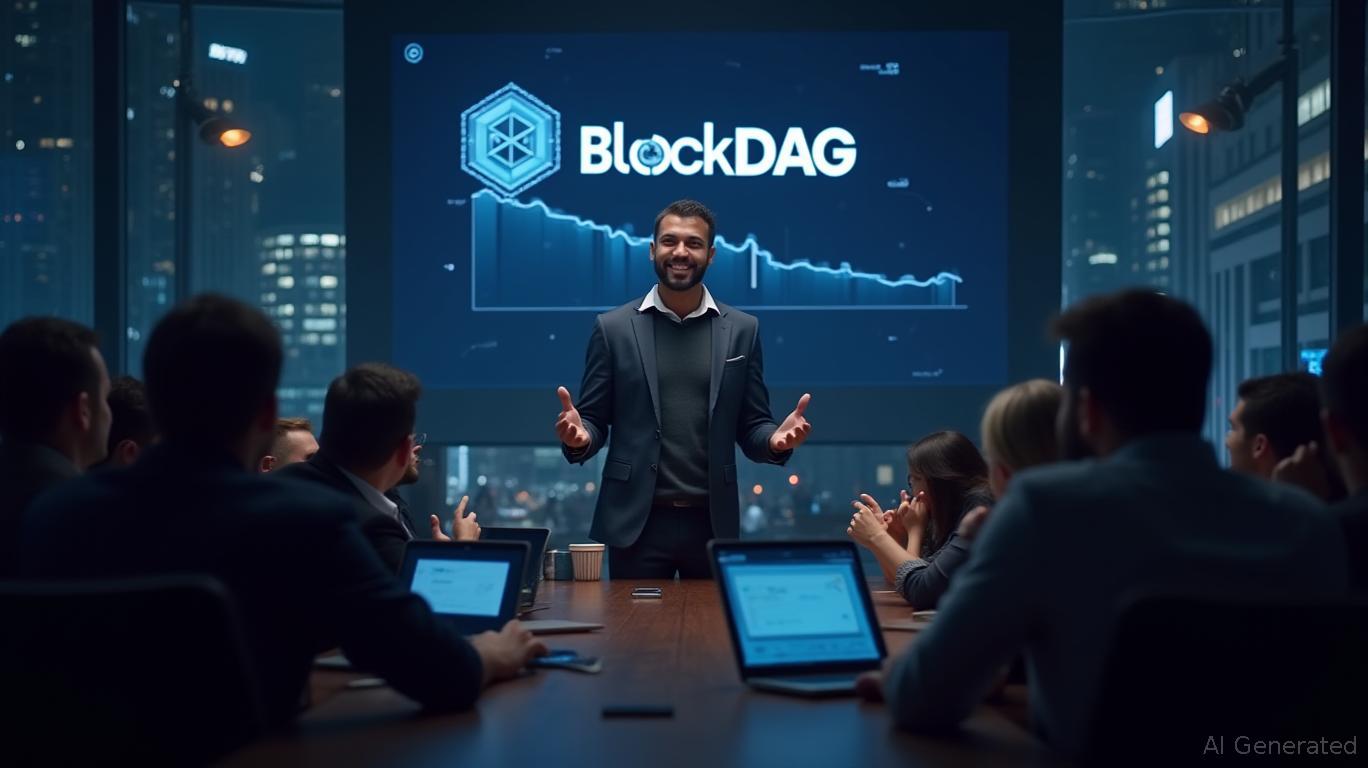Bitcoin News Update: BlockDAG Emerges as Ethereum’s Successor: $430M Presale Addresses Scalability’s $430M Challenge
- BlockDAG (BDAG) leads 2025 crypto with $430M presale, 27B tokens sold, and 4,500 dApp developers, leveraging hybrid DAG-PoW architecture to achieve 1,400 TPS. - Chainlink integrates S&P risk assessments for 2,400+ institutions while Render (RNDR) expands AI compute with H200 GPUs, projecting $6–$7 price targets by year-end. - Snorter Token (SNORT) and Bitcoin Hyper face speculation amid $5.7M and $13M presales, contrasting BlockDAG's utility-driven model with 20,000+ miners and 3.5M X1 app users. - Block
By late 2025, the cryptocurrency sector is undergoing a significant transformation, with BlockDAG (BDAG) capturing widespread attention through its

Chainlink (LINK) is further cementing its position as a critical infrastructure for on-chain finance, having recently incorporated S&P Global Ratings' Stablecoin Stability Assessments (SSAs) into its DataLink platform, as detailed in a
BlockDAG's testnet has reached 1,400 transactions per second (TPS), marking a 75% improvement over previous records, and aims to achieve 15,000 TPS at launch, according to a
While BlockDAG is focused on infrastructure, Snorter Token (SNORT) is gaining momentum among meme enthusiasts with its Telegram-based trading bot. The project features automated token sniping and MEV-resistant swaps, appealing to retail traders aiming to compete with larger investors. Analysts believe SNORT could climb by 767% before the year ends, though its speculative appeal stands in contrast to BlockDAG’s practical approach. Some reports even highlight Snorter as a possible
With stablecoins gaining influence and economic uncertainty persisting, projects offering real-world utility are attracting more attention. Chainlink’s institutional-grade data verification, Render’s AI infrastructure growth, and BlockDAG’s scalability advances all illustrate this movement. The project’s mix of technical progress, developer engagement, and active community has drawn parallels to early
Disclaimer: The content of this article solely reflects the author's opinion and does not represent the platform in any capacity. This article is not intended to serve as a reference for making investment decisions.
You may also like
India Extends Crypto Reign as US Closes In With 50% Surge

Bitcoin Updates Today: Investors Turn to Bitcoin ETPs as Secure Investments During Fed-Related Uncertainty
- Crypto ETPs saw $921M net inflows last week, driven by Bitcoin's $931M surge amid Fed rate-cut expectations. - Ethereum faced $169M outflows for first time in five weeks as investors shifted to Bitcoin as a macro hedge. - U.S. ($843M) and Germany ($502M) led inflows, with BlackRock's Bitcoin ETP attracting $324M alone. - Market awaits Fed's October 29 rate decision (97% cut probability) and T. Rowe Price's crypto ETF filing.

Solana News Update: Digitap's Visa Integration Connects Cryptocurrency with Traditional Finance
- October 2025 crypto market sees Solana ($SOL) and XRP reclaim key price levels, driven by mainstream adoption like Gemini's staking-enabled credit card offering 6.77% yields. - Digitap ($TAP), a Visa-partnered "omnibank" project, raises $1M in presale with AI-powered cross-border payments slashing fees to under 1%, attracting 5,000% rally predictions. - Market shifts toward utility-driven projects as Digitap's beta app enables crypto-fiat interoperability, while Solana's institutional adoption via MiFID

Pharos and Chainlink connect traditional finance and decentralized finance to make tokenized assets accessible to everyone
- Pharos Network integrates Chainlink's CCIP and Data Streams to secure tokenized real-world assets (RWAs) and enable cross-chain transfers. - The collaboration bridges traditional finance (TradFi), DeFi, and RWAs, aiming to democratize institutional-grade tokenized asset markets for individual investors. - Chainlink's infrastructure delivers low-latency pricing data and secure cross-chain operations, enhancing scalability and mitigating front-running risks through "commit-and-reveal" architecture.
